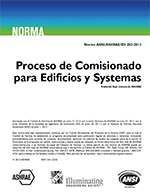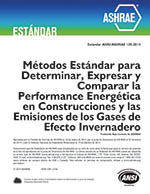Description
The transcritical carbon dioxide (CO2)refrigeration cycle has received attention for its potential application to a variety of air-conditioning and heat pump equipment platforms. One of these applications is for mobile systems using open-drive type compressors operating from a vehicle engine. Another is for unitary systems with external electrical energy input. A military research and development activity has combined these two technologies and reports experimental results after fabrication and testing of a packaged-unitary CO2 unit using an open-drive automotive compressor. The experimental platform is a Military Standard (Mil-Std)Environmental Control Unit (ECU).
Mil-Std ECUs have traditionally relied upon hydrochlorofluorocarbon(HCFC) working fluids. These fluids are recognized as substances that destroy the earth’s ozone layer, and they are being phased out of production and use. Hydrofluorocarbons(HFCs) have been proposed as the next industry standard, but HFCs have high direct global-warming potential and, like their predecessors, are subject to environmental regulation. HFCs are also costly and impose a handling and maintenance logistics burden for the military and, consequently, may represent only an interim solution for military air-conditioning and refrigeration needs. Carbon dioxide is inexpensive, safe, widely available, and fundamentally feasible. Operating at substantially higher working pressures, carbon dioxide (CO2) may offer the potential of lighter, more compact systems, as well as providing environmental, performance, and logistics advantages that are attractive for military applications.
The experimental ECU was built in the physical package of an existing 3-ton (10.5 kW)ECU. The unit consists of an electric motor-driven automotive compressor, microchannel heat exchangers, an accumulator, and a hand-adjusted metering valve. The hand-adjusted metering valve was used so that the optimal performance could be obtained at each ambient condition. (A TXV controller can be designed later to maintain the pressures that produced optimum performance during testing.) The compressor is a variable-displacement, open-drive, reciprocating compressor. The heat exchangers were produced using multiple slabs of parallel-flow microchannel tube plumbed together to form a heat exchanger. Because Mil-Std requirements limit heat transfer to a single face of the ECU, the slabs must be arranged by increasing the depth rather than the face area of the heat exchanger. The slabs are oriented with headers at the top and bottom to allow for the draining of condensate. Each slab is divided into four circuits with 12 tubes per circuit and 15 fins per inch (5.9 fins per cm). The slabs are completely reversible for operation in heat pump mode. The system was designed with a factor of safety of four over maximum operating pressure, and stainless-steel tubing with compression fittings was utilized. An internal suction-line heat exchanger (SLHX) was added to the system to determine the effect on capacity and efficiency. A conventional Mil-Std ECU using R-22 refrigerant was also tested at the same operating conditions to identify a performance baseline for evaluation of the experimental CO2 unit.
Test conditions included extremes of high and low ambient temperatures and high humidity.Test results presented in this paper cover only the cooling mode operation of the prototype unit.The CO2) Basic unit did not perform as well as the R-22 baseline unit in either capacity or efficiency for the range of test conditions. The CO2 Plus configuration improved the capacity and efficiency ut still fell short of the R-22 baseline. Additional modifications will be necessary to continue to improve CO2 performance, and they are planned.
Citation: Symposium, ASHRAE Transactions, vol. 108, pt. 2
Product Details
- Published:
- 2002
- Number of Pages:
- 7
- File Size:
- 1 file , 150 KB
- Product Code(s):
- D-8863




